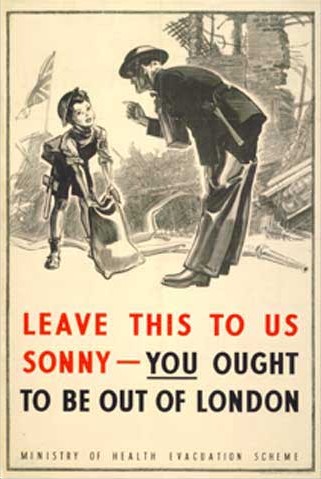Evacuation in WW2
The evacuation of Britain’s children out of British cities during World War Two remains the biggest mass movement of people the nation has ever seen. Within only four days, nearly 3,000,000 people were moved from the cities to the countryside to keep them safe from German air raids. Most of these evacuees were schoolchildren, but some mothers accompanied them, as well as a 100,000 teachers.
The order to evacuate came at 11.07am on 31 August 1939, and within a week a quarter of Britain’s population had a new address. Evacuees left their homes and parents to live with host families in new homes, called ‘billets’. Some children returned home within a few weeks after there had been little sign of bombing, but many were again evacuated in the summer of 1940 at the start of the Blitz. For the majority, these ‘billets’ would become their home for the duration of the war.
Moving millions of people out of towns and cities was a logistical nightmare, and at the outbreak of war it became obvious that the Government’s plan for this mass evacuation were deeply flawed. For one, it had grossly overestimated the intensity of aerial bombing and number of casualties. This resulted in propaganda that scared the population, leading to panic when it came time to evacuate. What’s more, the man in charge of evacuation, Sir John Anderson, was a cold character with little empathy for the parents or children separated by the evacuations.

Despite this, Londoners adopted a spirit of patriotism and optimism on the first day of evacuations. Many evacuees remember singing as they marched to the train stations with their classmates. Every evacuee also had to carry a gas mask, food for the journey and a small case with toiletries and clothes. Pinned to their coats were labels with their names, home address, school and destination.
For many of the city children, living in the countryside felt like an adventure. Many of the evacuees were hosted by kind families who treated them like one of their own, but for others it was a difficult time. While they represent a minority, abuse and mistreatment was still a reality for some evacuees.
The greatest culture clashes often came when the evacuees mixed with local children at school. ALthough many became firm friends, there were clear differences between the ‘townies’ and the locals.
Doreen Foreman was evacuated from Margate to Rugeley. Here she explains some of the differences between home and life in a mining community.
‘I went from a very ordinary church-going family to live with a mining family in Rugeley and where we used to spend... all day on Sunday at church here, I spent it in the pub or the club or whatever, you know. At Christmas, our Christmases were quite different because there again, we’d go to the pub and whereas here it was always in church and so... there was a vast difference.’
See also: Evacuation and Education
MLA Citation/Reference
"Evacuation in WW2". HistoryLearning.com. 2025. Web.
